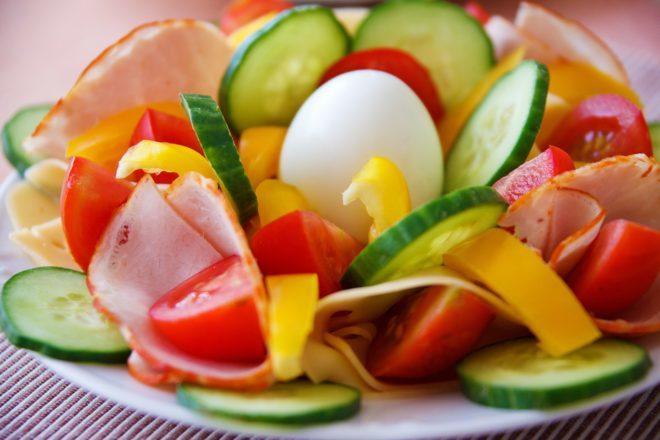I often get asked, “What is the difference between the Ultra Lite Ketogenic diet, and the Paleo Diet? We at Ultra Lite specialize in helping people to make better food choices with a view to teaching them how to balance ones consumption of proteins and carbohydrates, to give one the tools for sustainable weight management.
The Ultra Lite program provides a natural balance of vitamins, minerals and amino acids which not only achieves weight loss but promotes a total feeling of health and well being.
The main concept is that we teach people that by eating 3 whole food meals a day (as opposed to meal replacements) they can get into ketosis (a fat burning state) safely.
So What Is The Difference?
What It Means To Be Ketogenic
The goal is to force the body into a state of ketosis, the process of the body burning stored fat. On this plan, you achieve ketosis a modified protein sparing fast, the reduction of carbohydrates and the increase dietary fat.
A 2004 study published in Experimental & Clinical Cardiology found that long-term adherence to a ketogenic diet may:
- Reduces body mass
- Lowers blood LCD and glucose
- Increase the level of HDL or “good” cholesterol
What Is The Palaeolithic Diet?
The Paleo plan focuses more on eating meat under the assumption that early cave dwellers had limited access to grain and greens, and thus were ‘made’ to eat a diet primarily composed of protein.
Practitioners of this plan focus of getting energy from animal products that are high in protein and low in carbohydrates.
Avoid processed foods like:
- Refined sugar
• Table salt
• Dairy
Modern man faces many chronic diseases that didn’t plague them in prehistoric days, so hypothetically, eating the same way should improve your health.
Differences Between The Two Plans
The ketogenic diet focuses on manipulating the three macronutrients, which are fat, carbs and protein for those keeping score. The Paleo diet is more about the food choices. You eliminate dairy, grains and processed foods, but balance the macronutrients any way you want.
Why Is The Ketogenic Diet A Fat Burning Program?
A ketogenic diet is quite simply any diet that forces the body into a process called ketosis, whereby fats are burned instead of carbohydrates for use as energy.
A proper ketogenic diet calls for the dieter to consume high amounts of fat, adequate amounts of protein, and very low amounts of carbohydrates. Our bodies are used to turning carbohydrates into glucose to send all over the body as energy.
When we enter ketosis by sufficiently limiting our carbohydrate intake, our livers start breaking down fat cells into fatty acids and ketones, to be used as energy.
Why Does The Ketogenic Diet Work?
The ketogenic diet works much like any other diet: by limiting the amount of calories you consume, thereby creating a caloric deficit where the body burns more energy than it takes in.
That is the fundamental science of weight loss, and while the “a calorie is a calorie” argument is subject to much debate, few will argue that all successful diets rely on caloric restriction, one way or another.
Since the ketogenic diet relies on reducing calories, why cut out carbohydrates at all? Why not just practice calorie counting and focus on eating a traditional low-fat diet like most diet books and nutritionists recommend? What is the advantage of the ketogenic diet?
Great questions.
Many of the advantages of the ketogenic diet are rooted in its ability to control hunger much more effectively than other diets:
Ketogenic Diets Control Blood Sugar & Minimize Insulin Spikes.
When we eat carbohydrates, our blood-glucose levels rise rapidly. This causes an equally rapid insulin response from the pancreatic gland. The insulin disperses excess blood glucose, which causes you to feel hungry all over again.
By eating a low carbohydrate diet, we keep our blood sugar levels low and steady, and as a result, carb-induced hunger spikes are avoided.
Reducing insulin levels are paramount to success with any diet, as insulin is the hormone that tells our bodies to store fat. By keeping our insulin levels low, we create an environment within our bodies that limits fat storage and promotes fat lipolysis.
Ketogenic Diets Allow Us To Eat Food That Is Satiating & Filling
Many find that restricting calories on a ketogenic diet is extremely easy. If you’re doing the ketogenic diet properly, you’ll be consuming the vast majority of your calories each day from fats and protein, both of which are extremely filling and can be quite delicious.
Once you remove things like refined sugars and simple carbohydrates from your diet, you’ll find that 2,000 calories (or however many you aim to consume) leaves plenty of room to fill yourself up each day.
Many keto dieters even find themselves having a hard time consuming enough food each day!
How Do I Do A Keto Diet?
Successful keto dieting is all about properly balancing your macronutrient ratios. It is generally recommended that ketogenic dieters should consume about
60% of their macronutrients from fat, 35% from protein, and 5% from carbohydrates.
Carbohydrate intake should generally be limited to less than 50 grams per day. When starting out, it is generally recommended that you limit your carbohydrates to 20 grams per day, as being strict initially will make sure you enter ketosis, and help you learn the ins and outs of successful low carbohydrate dieting.
In your first few weeks, it is helpful to obsessively and accurately track every morsel of food or liquid that enters your body. (Many of us that do keto use our smartphones to keep track of our food consumption – MyFitnessPal and LoseIt! are both very popular apps).
After a while, you start to develop an understanding of how many grams of carbohydrates are in different kinds of food, and you quickly learn how to adjust your dietary habits to a low carb lifestyle.
How Do I Know I’m Doing The Ketogenic Diet Right?
Many people choose to buy a product called Ketostix, which allow you to check the ketone levels of your urine. When in ketosis, our bodies excrete excess ketone bodies through our urine, sweat, and breath.
This is handy because we can check to see if ketones are present in our urine. If they are present in any amount, your body is in ketosis and you can be certain that you are sufficiently limiting your carbohydrate consumption.
Once you get the hang of the ketogenic diet, and you are able to stay in ketosis consistently and effortlessly, you can raise your carbohydrate intake until you find your body’s “sweet spot” – that is, the amount of carbs you can eat each day and still stay in ketosis.
Just because you’re in ketosis does not necessarily mean that you are doing keto correctly, however – maintaining proper macronutrient ratios is important. Your body needs sufficient levels of protein to preserve muscle mass, and enough overall energy to keep your brain, organs, and muscles happy.
You can find much more information on living a holistic lifestyle in these free magazines and on our YouTube channel.
 Malcolm McLean – Ketosis Specialist
Malcolm McLean – Ketosis Specialist
If you would like to learn more. I would love to work with you.






